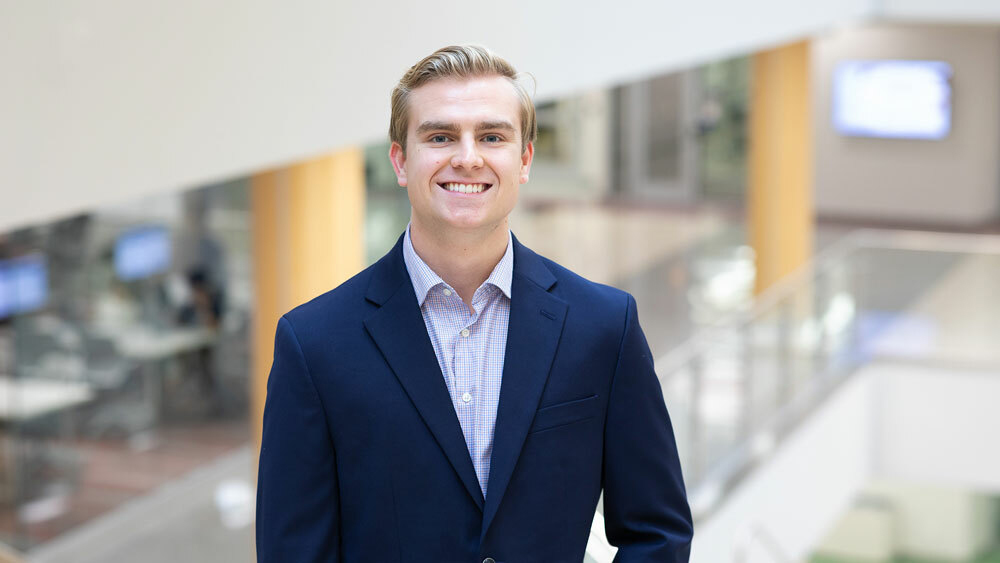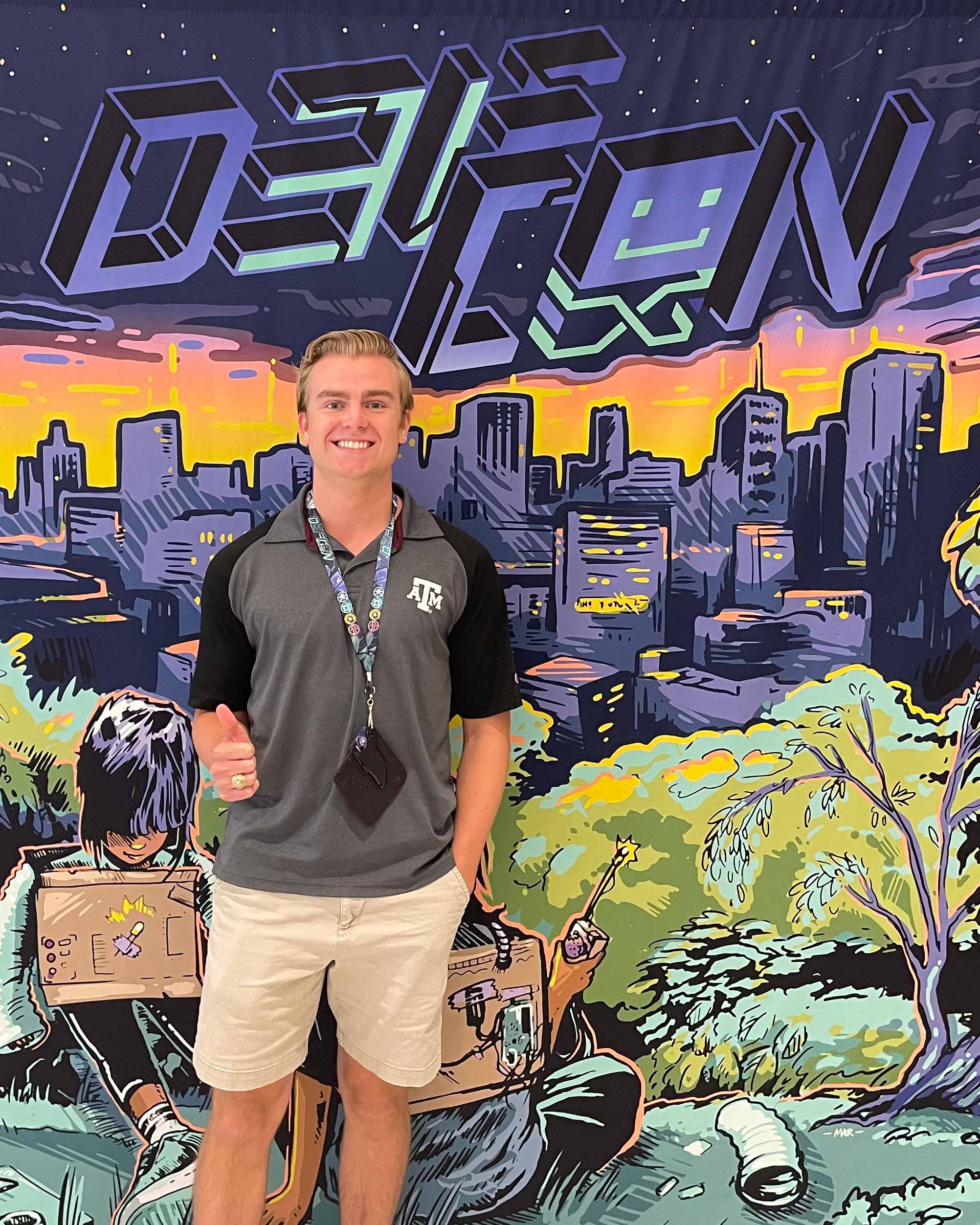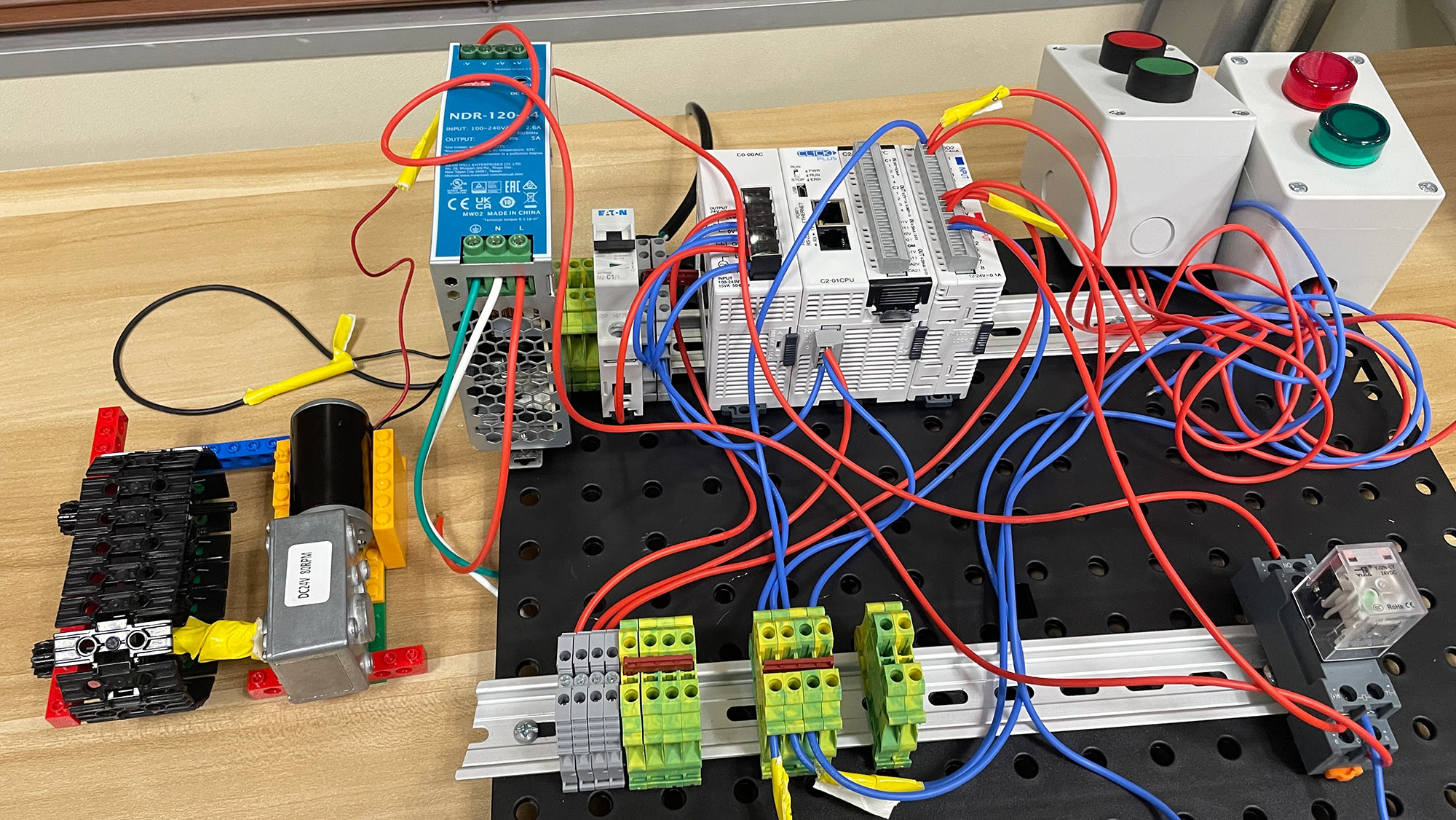
Many undergraduate students switch majors in college. Connor McLaren '23 has always had the same end goal — a career in cybersecurity.
McLaren earned an interdisciplinary engineering degree from the Department of Multidisciplinary Engineering at Texas A&M University with minors in cybersecurity and industrial engineering. He is now a graduate student in the department pursuing a Master of Engineering in Engineering with a Specialization in Cybersecurity.
In addition to his studies, he is a senior triage analyst in The Texas A&M University System Office of Cybersecurity, where he has gained hands-on operational cybersecurity experience in incident response. McLaren provides a second review of security events and is ultimately responsible for closing security alerts as false alarms or escalating them to higher-tier analysts on the incident response team.
As an undergraduate interested in math and science, McLaren chose engineering at Texas A&M due to its reputation as a top-tier engineering program in the state.
"I majored in multidisciplinary engineering because I wanted to tailor my educational experience to cybersecurity as much as possible," he said. "Cybersecurity involves more than just coding and software. I needed to become a well-rounded candidate in the professional world by studying multiple areas of engineering."
While Texas A&M didn't establish the multidisciplinary engineering department until 2020, the interdisciplinary engineering degree program has existed for some time, so McLaren worked closely with his undergraduate advisors to design a degree plan focused on cybersecurity.
I'm very blessed and privileged to learn from some of the best engineering and cybersecurity faculty at Texas A&M.
The subject piqued his interest thanks to an uncle with over 20 years of experience working in cybersecurity for government agencies. However, McLaren's official cybersecurity journey began during his freshman year in an "Ethics in the Digital Age" philosophy class taught by Dr. Glen Miller. During office hours, Miller suggested McLaren consider joining the Texas A&M Cybersecurity Club and learn about the various programs offered by the Texas A&M Cybersecurity Center.
What began as a casual suggestion eventually led McLaren to hear about the security analyst job position, a significant step in his cybersecurity journey at Texas A&M.
"The club is a wonderful, free and beginner-friendly resource to gain hands-on learning," he said. "Get to know your professors and attend office hours, especially in upper-level courses. You never know what opportunities you'll discover."
After graduating this year, McLaren knew he wanted to continue his studies and attend graduate school. With its numerous cyber accreditations, Texas A&M was at the top of his list.
The university is designated as a Center for Academic Excellence in Cybersecurity (CAE-C) by the National Security Agency and the Department of Homeland Security and is one of only eight universities to hold all three CAE-C designations, including Cyber Defense, Cyber Defense Research and Cyber Operations.
These distinctions support the president's national initiative for a cybersecurity education to produce exceptional professionals for a cyber-secure nation.
McLaren is well on his way to becoming highly accredited himself. He completed the Texas A&M Cyber Leadership Development Program and the Virtual Institutes for Cyber and Electromagnetic Spectrum Research and Employ program as an undergraduate.
He also received the Texas A&M CyberCorps Scholarship for Service, which is offered to outstanding students who complete a bachelor's or master's degree in cybersecurity.
Through his degree, McLaren attended classes across departments, including computer science and engineering, industrial engineering and technology, mathematics, physics, chemistry and philosophy. Some of his most impactful relationships in Aggieland include his professors.
"I'm very blessed and privileged to learn from some of the best engineering and cybersecurity faculty at Texas A&M, such as Dr. Glen Miller, John Romero, Dr. Paula Dewitte, Dr. Eman Hammad, Dr. Justin Cantu, Dr. Marty Carlisle and Jim Donnell," he said.
His graduate coursework includes applying data analytics in cybersecurity to detect obfuscated malware and researching the security of cyber-physical systems like industrial control systems and programmable logic controllers. Next semester, he will dive into a software reverse engineering graduate course.
In Fall 2023, McLaren took an advanced network systems and security course with Dr. Eman Hammad, assistant professor in the Department of Engineering Technology and Industrial Distribution. She allows students to choose their preferred project to complete the course requirements. McLaren chose a hands-on project where he built a small industrial control system with an actual programmable logic controller. He is working with Hammad to publish a paper based on his final project.

“Connor was among the most curious and hardworking students in my course,” Hammad said. “Not only was he creative and resourceful in making the system, but he examined different cybersecurity tools to monitor and conduct active cyber-physical attacks on it. I am confident that he will make a meaningful impact as he graduates and joins the cybersecurity profession full-time.”
Another project he completed as an undergraduate was a senior capstone design project, which focused on a cybersecurity collaboration with the Texas A&M Cyber Range."We designed a virtual network environment for cybersecurity testing," McLaren said. "The best parts of the capstone were the bonds I built and the memories I made collaborating with my amazing team," he said. "Not only did we gain practical experience and succeed in our design goals, but our project was even shared in a Texas A&M Engineering news article."
Their capstone project was sponsored by John Romero, program director of Outreach and Continuing Education at the Texas Cyber Range and visiting lecturer in multidisciplinary engineering.
“I've had the pleasure of meeting and working with many talented students, but Connor McLaren holds a special place as one of my favorite cybersecurity students,” Romero said. “His capstone project, creating a mobile cyber range extension for the Texas Cyber Range, reflects his technical ability, innovative mindset and commitment to advancing cybersecurity education.”
For Romero, watching McLaren grow and excel in this challenging field has been immensely rewarding. “Connor exemplifies the spirit of curiosity and determination we strive to foster in our students,” he said. “Undoubtedly, his contributions will leave an indelible mark on the cybersecurity world. He’s leaving a legacy here.”
After graduating and interviewing for cybersecurity positions this summer, McLaren realized he was highly equipped professionally, thanks to his academic and industry experience. He continues to succeed with a balanced blend of theoretical knowledge from the classroom and practical hands-on experience from internships, his capstone and now his job with Texas A&M System Cybersecurity.
As McLaren reflects on his time at Texas A&M thus far, he is thankful for the excellent cybersecurity opportunities and support from his family.
"I would not be where I am today without God's grace and the help, mentorship and investment from many wonderful people," he said, "including Jennifer Cutler, Col. Jim Becker, Dr. John Walter, Dr. Drew Hamilton, Justin Leiden, Stephen Meek and Bast Schellhorn at the Cybersecurity Center. Their encouragement and support helped me immensely."